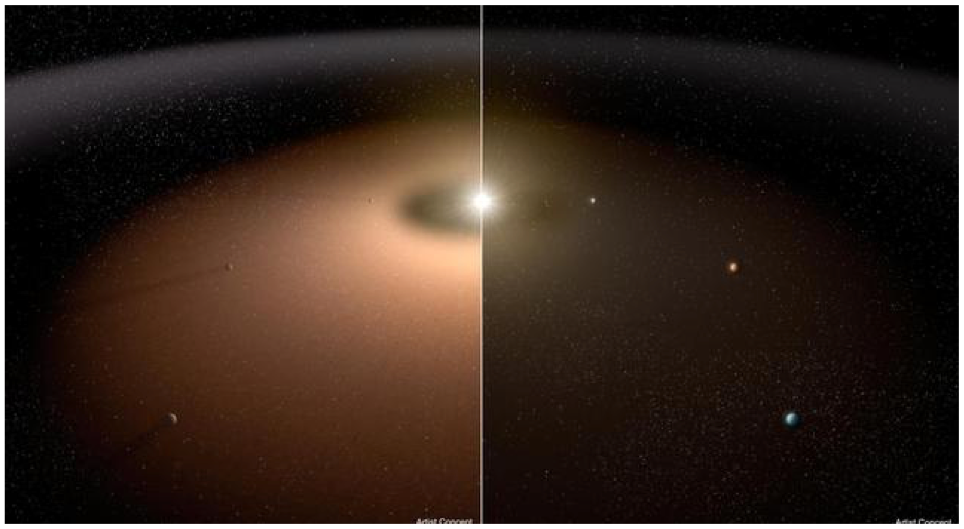Exozodiacal disks

Exozodiacal dust is the extrasolar counterpart of the zodiacal dust found in the solar system. It is both a key to understanding the evolution of planetary systems and a source of noise for the direct detection of Earth-like exoplanets (see image above, see also Defrère et al. 2010). Because exozodiacal dust is located in the inner planetary region, where terrestrial planets form and evolve, it is necessary to use the resolving power of infrared interferometry to observe it directly. I have led various studies on the exozodiacal dust around several emblematic nearby main-sequence star such as Vega (Defrère et al. 2011), beta Pic (Defrère et al. 2012), and eta Crv (Defrère et al. 2015). I also strongly contributed to two large surveys of nearby planetary systems in the Northern hemisphere with the CHARA array (Absil et al. 2013) and the Southern hemisphere with the European Very Large Telescope Interferometer (VLTI, Ertel et al. 2014). These studies provided the first statistical results about the occurrence of hot exozodiacal dust disks around nearby mainsequence stars, which are now used in theoretical and modelling works as an input to constrain the dynamical models of inner planetary systems (e.g., Kral et al. 2017). I also participated in NASA-funded projects to measure the prevalence of warm exozodiacal dust with the Keck Interferometer Nuller (KIN, Mennesson et al. 2014) and more recently the Large Binocular Telescope Interferometer (LBTI, Weinberger et al. 2015, Ertel et al. in press).
For more information:
- Ertel et al., "The HOSTS Survey for Exozodiacal Dust: Observational Results from the Complete Survey", The Astronomical Journal, vol. 159, issue 4, 2020.
- Ertel et al., "The HOSTS survey - Exozodiacal dust measurements for 30 stars", The Astronomical Journal, vol. 155, issue 5, 2018.
- Kral et al., "Exozodiacal clouds: hot and warm dust around main sequence stars", Astronomical Review, vol. 13, issue 2, pp. 69-111, 2017.
- Defrère et al., "First-light LBT nulling interferometric observations: warm exozodiacal dust resolved within a few AU of eta Crv", ApJ 799, 1, 2015.
- Mennesson et al., "Constraining the exozodiacal luminosity function of main-sequence stars: copmplete results from the Keck nuller mid-infrared survey", ApJ 797, 2, 2014.
- Ertel et al., "A near-infrared interferometric survey of debris-disk stars. IV. An unbiased sample of 92 southern stars observed in H band with VLTI/PIONIER", A&A 570, A128, 20, 2014.
- Absil et al., "A near-infrared interferometric survey of debris-disc stars. III. First statistics based on 42 stars observed with CHARA/FLUOR", A&A 555, A104, 21, 2013.
- Defrère et al., "Hot circumstellar material resolved around beta Pic with VLTI/PIONIER", A&A 546, L9, 4, 2012.
- Defrère et al., "Hot exozodiacal dust resolved around Vega with IOTA/IONIC", A&A 534, A5, 10, 2011.
- Defrère et al., "Nulling interferometry: impact of exozodiacal clouds on the performance of future life-finding space missions", A&A 509, A10, 2010.